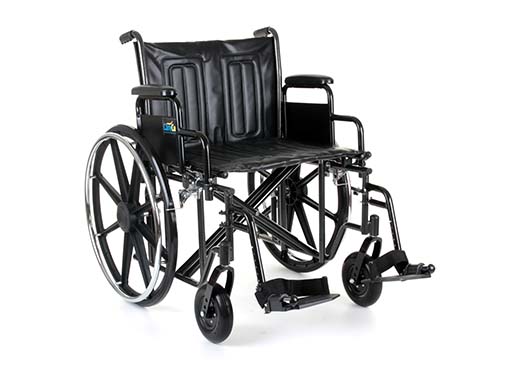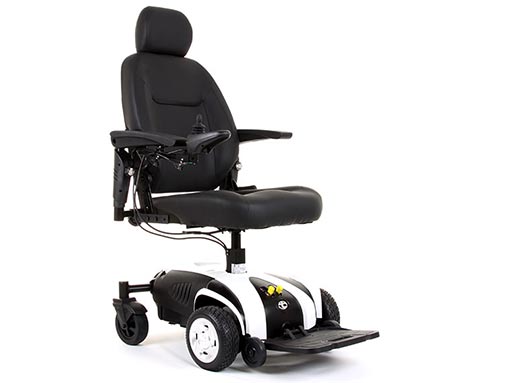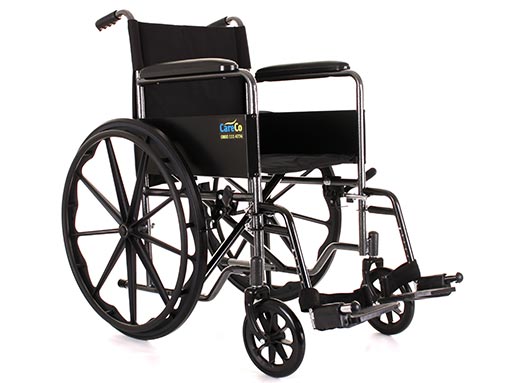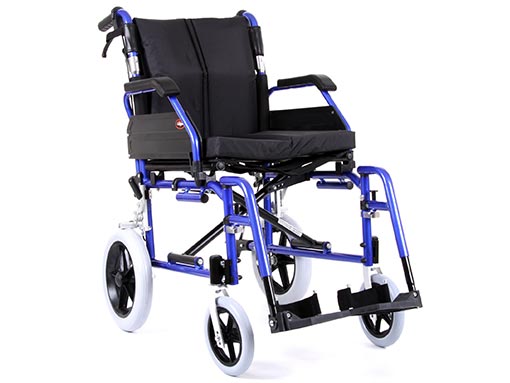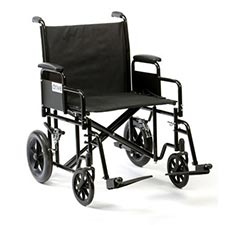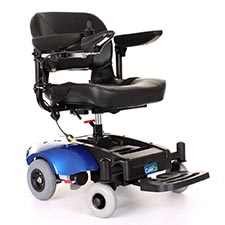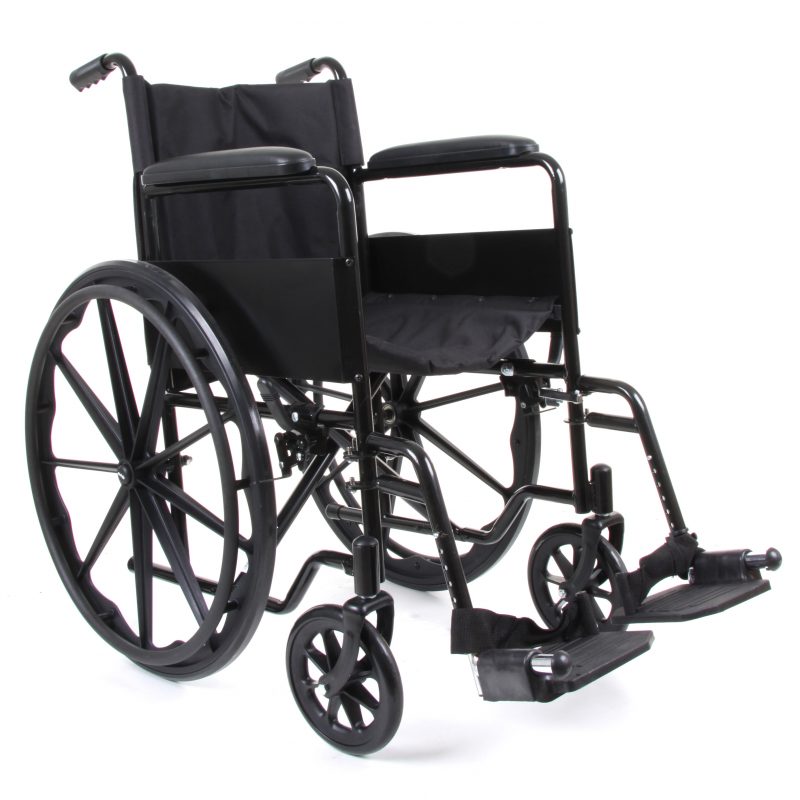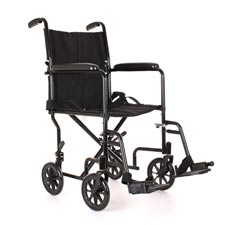
Which Wheelchair is right for me?
Manual wheelchairs are those that require human power to move them. Many manual wheelchairs can be folded for storage or placement into a vehicle, although modern wheelchairs are just as likely to be rigid framed. Manual or self-propelled wheelchairs are propelled by the occupant, usually by turning the large rear wheels, from 20-24 inches (51–61 cm)in average diameter, and resembling bicycle wheels.
Transit wheelchairs are designed to be propelled by an attendant using the handles, and thus the back wheels are rimless and often smaller. These wheelchairs are often used as ‘transfer chairs’ to move a patient when a better alternative is unavailable, possibly within a hospital, as a temporary option, or in areas where a user’s standard chair is unavailable.
A bariatric wheelchair is designed to support larger a passenger weight and width than a standard wheelchair. Most standard bariatric chairs are designed to support no more than 32 stone (203 kg) on average. Bariatric wheelchairs come in self-propelled, transit and electric options.
An electric-powered wheelchair, also known as a powerchair is a wheelchair that is moved via the means of an electric motor and navigational controls, usually, a small joystick mounted on the armrest, rather than manual power. Various models have unique features such as elevated seat, kerb climbers and a variety of other options.
Bariatric Wheelchairs
Bariatric wheelchairs for larger users up to 32 stone.
Electric Wheelchairs
Electric wheelchairs, also known as power chairs.
Self Propelled Wheelchairs
Our selection of manual or self propelled wheelchairs.
Transit Wheelchairs
Lightweight transit wheelchairs to transfer users easily.

